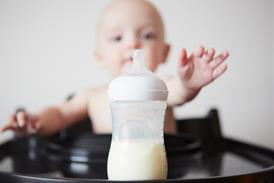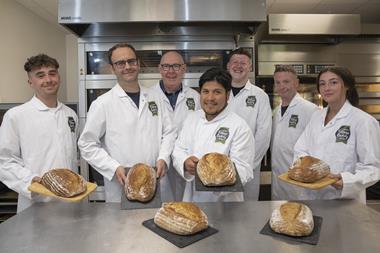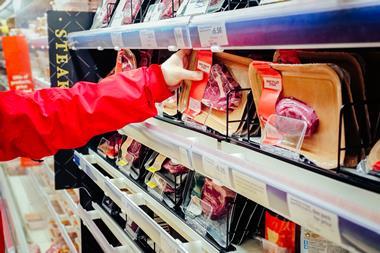The week comes but once a year. Food-borne microbes don't. Over the years they have had the habit of taking us by surprise. Even an old and well-understood recidivist like salmonella still behaves badly; from time to time in the last couple of decades it has been joined by a personal enemy of mine, E.coli O157.
Having said all this, and even taking account of the fact that microbes are merciless and sensitive probes of the weaknesses in food safety that we know are still too common, it cannot be denied that, on balance, the news is good.
Food poisoning figures the hard data based on microbiologically confirmed cases are falling. Since the late 1990s the number of salmonella cases has been going down by about a third every year. Campylobacter case numbers have stopped increasing and are also beginning to show a downward trend, although not as dramatic as for salmonella. E.coli O157 always, fortunately, much rarer than the other two has levelled off.
Chicken and egg producers must be given the lion's share of the credit for the salmonella improvements. Their biosecurity and vaccination programmes have been very successful.
But I think it would be wrong not to apportion credit to food safety initiatives like National Food Safety Week and the manifold efforts of the Food Standards Agency as well. Neither must we forget all the work being done by local authorities, their environmental health officers and their professional organisations.
Progress has not always been easy and there is a long way to go. There are still hundreds of thousands of cases of gastrointestinal infectious diseases every year in Britain, many of them food-borne and so, in principle, preventable. HACCP is coming for all, but we know that implementing it effectively in small businesses is challenging; for many its essential foundation, a properly trained workforce, is not there yet. And, to cap it all, there is SARS.
It may seem at first sight that the disease has nothing to do with food safety. It has only been a serious problem in far away countries. There is no evidence that it is spread by food. But the lessons it teaches are very important. It is brand new. So was E.coli O157 in the early 1980s. Like SARS so far the total number of cases has not been very great but, also like SARS, its mortality rate has also been significant. Burger chains in the US had a hard time when young customers died. So SARS reminds us that we must be prepared for new challenges.
There is another connection between SARS and the hygiene messages we try to get across at events like Food Safety Week. A central message is hand washing. It is the same for SARS. Even though a good deal of its spread is person to person via droplets, it can be spread by contact with contaminated surfaces including the surfaces of hands. The virus causes diarrhoea and in one very big outbreak in Hong Kong, at the Amoy Gardens tower blocks, spread by the faecal-oral route was important. So getting across the hygiene message can have beneficial impacts in areas far removed from food.
{{COMMENT - GUEST }}
Having said all this, and even taking account of the fact that microbes are merciless and sensitive probes of the weaknesses in food safety that we know are still too common, it cannot be denied that, on balance, the news is good.
Food poisoning figures the hard data based on microbiologically confirmed cases are falling. Since the late 1990s the number of salmonella cases has been going down by about a third every year. Campylobacter case numbers have stopped increasing and are also beginning to show a downward trend, although not as dramatic as for salmonella. E.coli O157 always, fortunately, much rarer than the other two has levelled off.
Chicken and egg producers must be given the lion's share of the credit for the salmonella improvements. Their biosecurity and vaccination programmes have been very successful.
But I think it would be wrong not to apportion credit to food safety initiatives like National Food Safety Week and the manifold efforts of the Food Standards Agency as well. Neither must we forget all the work being done by local authorities, their environmental health officers and their professional organisations.
Progress has not always been easy and there is a long way to go. There are still hundreds of thousands of cases of gastrointestinal infectious diseases every year in Britain, many of them food-borne and so, in principle, preventable. HACCP is coming for all, but we know that implementing it effectively in small businesses is challenging; for many its essential foundation, a properly trained workforce, is not there yet. And, to cap it all, there is SARS.
It may seem at first sight that the disease has nothing to do with food safety. It has only been a serious problem in far away countries. There is no evidence that it is spread by food. But the lessons it teaches are very important. It is brand new. So was E.coli O157 in the early 1980s. Like SARS so far the total number of cases has not been very great but, also like SARS, its mortality rate has also been significant. Burger chains in the US had a hard time when young customers died. So SARS reminds us that we must be prepared for new challenges.
There is another connection between SARS and the hygiene messages we try to get across at events like Food Safety Week. A central message is hand washing. It is the same for SARS. Even though a good deal of its spread is person to person via droplets, it can be spread by contact with contaminated surfaces including the surfaces of hands. The virus causes diarrhoea and in one very big outbreak in Hong Kong, at the Amoy Gardens tower blocks, spread by the faecal-oral route was important. So getting across the hygiene message can have beneficial impacts in areas far removed from food.
{{COMMENT - GUEST }}













No comments yet